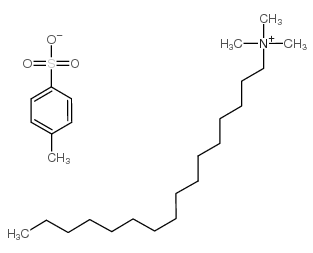The fluidity of Chinese hamster ovary cell and bull sperm membranes after cholesterol addition.
P H Purdy, M H Fox, J K Graham
Index: Cryobiology 51(1) , 102-12, (2005)
Full Text: HTML
Abstract
Cell plasma membrane fluidity is affected by membrane lipid and protein composition as well as temperature. Altering the cholesterol content of a membrane can change membrane fluidity at different temperatures and this may affect cell survival during cryopreservation. In these experiments, we examined the effect that adding cholesterol to the membranes of Chinese hamster ovary cells (CHO) and bull sperm had on cell plasma membrane fluidity and cell survival when cells were cooled to 5 degrees C or were cryopreserved. Cells were treated with 0, 1.5 or 5.0mg cholesterol-loaded cyclodextrin (CLC), stained with N-((4-(6-phenyl-1,3,5-hexatrienyl)phenyl)propyl)trimethylammonium-p-toluenesulfonate (TMAP-DPH) to evaluate membrane fluidity and with propidium iodide to evaluate cell viability, prior to analysis by flow cytometry at 23, 5 degrees C, and after cryopreservation. CHO cells exhibited a single cell population with all cells having similar membrane fluidity. Membrane fluidity did not change when temperature had been reduced and then returned to 23 degrees C (P<0.05), however, adding cholesterol to the cells induced membranes to become more rigid (P<0.05). Bull sperm samples consisted of two cell subpopulations, one having relatively higher membrane fluidity than the other, regardless of cholesterol treatment or temperature. In addition, cells possessing the highest membrane fluidity did not survive cooling or cryopreservation efficiently. CLC treatment did not significantly alter membrane fluidity after temperature changes, but did maintain higher percentages of spermatozoa surviving cooling to 5 degrees C and cryopreservation (P<0.05). In conclusion, adding cholesterol to cell resulted in detectable membrane fluidity changes in CHO cells and increased survival of bull sperm after cooling to 5 degrees C and after cryopreservation.
Related Compounds
| Structure | Name/CAS No. | Molecular Formula | Articles |
|---|---|---|---|
 |
Hexadecyltrimethylammonium p-toluenesulfonate
CAS:138-32-9 |
C26H49NO3S |
|
Magnetic mesoporous silica nanoparticles for potential deliv...
2014-11-07 [Dalton Trans. 43(41) , 15482-90, (2014)] |
|
Engineering poly(ethylene glycol) particles for improved bio...
2015-02-24 [ACS Nano 9(2) , 1571-80, (2015)] |
|
Dispersion of single-walled carbon nanotubes of narrow diame...
2005-08-04 [J. Phys. Chem. B 109 , 14454, (2005)] |
|
[Analysis of a new toothpaste].
[Odontostomatol. Implantoprotesi (4) , 17-9, (1981)] |
|
Spontaneous vesicle formation in aqueous mixtures of single-...
1989-09-22 [Science 245(4924) , 1371-4, (1989)] |